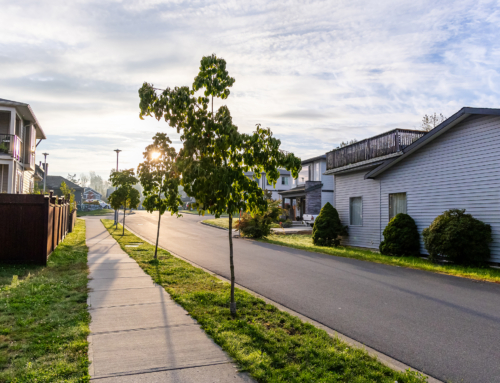School quality is one of the strongest signals in residential real estate because it connects directly to daily life for a large share of buyers. Even households without children tend to pay attention because school reputation often shapes neighborhood stability, resale momentum, and tax choices. In Greater Philadelphia this signal is nuanced. The City of Philadelphia operates a large and complex system with selective programs, special admissions schools, charters, and neighborhood catchments, while nearby counties contain many independent districts with distinct identities. Understanding how families shop, how catchments work, and how perception translates into offers will help you evaluate value with a clearer eye.
Buyers usually sort neighborhoods in three layers. The top layer is lifestyle fit that includes commute, block feel, parks, retail, and architecture. The second is the specific pocket that aligns with their day to day routine, from grocery routes to daycare to transit. The third is the school plan. Some buyers lead with the school plan and will only consider addresses inside a known catchment or district. Others pick a neighborhood for its broader qualities and then choose among the school options that exist there. When you sell a home, you are meeting all three layers at once. When you buy a home, you are deciding which layers matter most to you over the next seven years, which is the horizon many households use to justify the transaction costs of moving.
Inside the city, the school conversation requires a little homework. Families often begin with a short list of neighborhood elementary schools that are known for strong community engagement, stable leadership, and above average outcomes. They also watch for special admissions options at the middle and high school levels, and for charter schools that have a mission or program they value. The pattern looks different than in a small suburban district where a single set of schools serves a town or township. A city buyer who wants a neighborhood school experience will often look for tight knit catchments where the PTA is active and where families walk to school. Another buyer might plan around a charter application or a special admissions path and place more weight on transit to reach a school across the city. Both approaches produce healthy buyer demand, and they shape value in different ways.
A helpful overview of the way school strength and real estate value play off one another appears in this guide to Philadelphia area schools and property values from Revolve Philly. It summarizes the basic reasons people pay attention to catchments, from perceived academic quality to community cohesion to resale momentum. For an economic angle on how school districts correlate with price bands around the region, this Business Journal analysis of high end district trends adds useful context for shoppers who are comparing city and suburb choices across the metro area. You can scan that perspective here on Philadelphia Business Journal and then return to your block level questions with a more informed baseline.
Perception matters as much as data because homes are not traded by spreadsheets alone. A catchment with a visible parent network and steady school leadership tends to attract buyers who want to plug into a ready made community. Listing remarks that name the neighborhood school and show walkable distance give those buyers confidence. Even investors and first time buyers without children take note because those details suggest a consistent pool of future purchasers. Homes in these pockets can carry a small premium that shows up as more showings in week one and stronger offers in week two. Sellers who recognize that reality prepare their listings with clarity about the catchment and provide links to official school information during showings so that visitors do not have to guess. Buyers who recognize that reality move quickly when an address checks the school box and the lifestyle box at the same time.
Inside Philadelphia, boundaries can shift and programs can change, so precision is important. Before you rely on a catchment claim in a listing description, confirm the current status through official channels. Walk the route from the home to the school so you know what a family will experience at eight in the morning in January. Families who plan for a stroller or a scooter commute value simple sidewalks, safe crossings, and a clear curb in front of the school. The small things that parents mention to friends become part of reputation. They show up again a few years later when those same families think about selling.
At the middle and high school levels, special admissions and citywide programs add another layer. A buyer who is comfortable with a neighborhood elementary school might be planning for a selective program later, in which case their evaluation of a home will include transit options to reach that program. In practice that means a home that sits near a reliable bus route or a regional rail stop can serve a family’s school plan even if the middle school is not within a walkable distance. When you evaluate a property, think a few years ahead. If your child will be older before you sell, what will the daily trip to the school you prefer look like. If you do not have children now, will a future buyer care about that path. This kind of thinking is how you protect value and hedge against changes in program offerings.
Tax posture and school reputation also interact. In the suburbs, district choice is tied to tax rates that support school budgets. In the city, the school tax is one part of a broader property tax structure. Buyers weigh total cost of ownership against perceived quality of services. In a competitive market this calculus often favors neighborhoods that deliver a strong everyday experience even when a school plan includes charter or private options. That is one reason certain city neighborhoods with balanced access to transit, parks, and dining show price resilience over long periods. The school plan may vary from family to family, but the day to day quality of the neighborhood remains constant.
For sellers, the most practical way to respect this topic is to present your home with complete and accurate information that a buyer can verify. If you are within a known catchment, state it plainly and provide the source where buyers can look up boundaries. If your block sits near a charter that attracts families citywide, say that you are within a convenient reach of that option and identify the distance to transit connections that support the commute. If your neighborhood has a tradition of walking groups or after school play in a nearby park, photograph those assets and name them. Buyers are not only purchasing square feet. They are purchasing a morning routine and an afternoon cadence for the next several years.
For buyers, the most effective way to narrow the field is to build two simple maps. The first is a life map, which marks your workplaces, the activities you love, the people you see often, and the routes you already use. The second is a school map, which marks the catchments or programs that interest you and the transit lines that serve them. When the two maps overlap, you have found a pocket worth targeting. When they do not, you can decide which tradeoff you can live with. Sometimes the answer is that you will rent for a year in a promising area to learn the rhythm before you buy. Sometimes the answer is that you will buy now in a strong neighborhood and remain flexible about the school plan as your child grows.
Market behavior repeatedly confirms that school related confidence speeds up sales and supports pricing. A buyer who is certain about the school plan in a given location tends to write cleaner offers and accept fewer contingencies because they are solving more than one need with a single address. Appraisers also work within this reality. When they select comparable sales, they consider not only the size and condition of homes but also their location within a school context. This does not mean that a school district automatically adds a fixed premium. It means that comps in stable catchments often have a history of quick sales and strong prices that support today’s valuations.
It is also worth saying that the best school choice is not always the most obvious or the most talked about. Many families find a fit in programs that suit a child’s temperament rather than the program that carries the strongest brand. A smaller school with a warm community can deliver a better life for a particular child than a large school with more course offerings. Real estate value follows those lived truths over time. Neighborhoods where children and parents feel known and supported tend to retain households, bring neighbors together, and foster the sense of belonging that keeps blocks healthy. That feeling shows up as maintained facades, clean sidewalks, and eyes on the street, which in turn supports the next round of demand.
If you are beginning your search inside the city limits and want to see how listing prices and school context intersect in real time, browse current addresses on Homes for sale in Philadelphia and read the remarks closely. You will notice repeated patterns in how agents describe school proximity, playground access, and transit lines that connect to special admissions options. If you have questions about how we guide clients through this topic without bias and with respect for each family’s values and needs, learn more about our approach on About Albright Real Estate. Those two pages will anchor your research with real inventory and a clear picture of the counsel you will receive.
When you evaluate a specific property, ask a few grounded questions. What is the walk distance to the nearest school that could serve us in the next three years. What are the realistic options at the next level and how would we reach them from this address. What are the nearby childcare choices, and can we move through the day without a stressful chain of pickups and transfers. How do families use the nearby park or library after school. Once you have answers, you will feel a calm that helps you write an offer with conviction. If the answers are uncertain or if they depend on a future lottery outcome that you cannot predict, price that uncertainty into your decision and consider whether another block would serve you better.
Finally, remember that the school question is part of a larger story. You are choosing a home for mornings and evenings, for weekends and snow days, for birthdays and quiet dinners. A strong school plan is a gift. A strong neighborhood is a gift. The best addresses give you both. In a city with rich diversity and many paths through education, there are several ways to reach that outcome. With a clear sense of your family’s needs and a calm reading of the market, you can choose a home that supports the life you want now and the life you expect to live as your story unfolds.
If you want help narrowing to the blocks where your life map and your school map overlap, begin with a simple scan of homes for sale in Philadelphia and then start a conversation with our team. We will pair neighborhood knowledge with your priorities so that the home you choose fits both the classroom and the calendar you care about.








